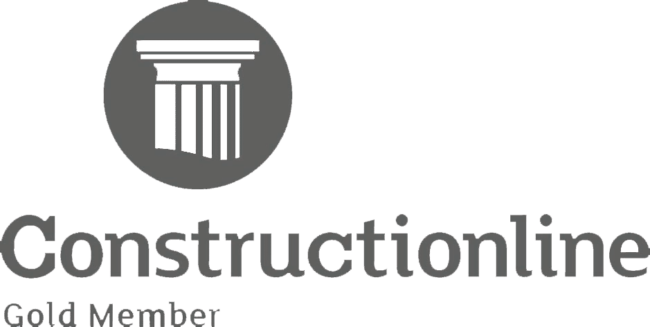Scan to BIM Project
Technics was appointed by our client, a large pharmaceutical company, to carry out a series of Scan to BIM surveys to help with future redevelopment of their building and management of the asset.
A live working environment…
As this was a fully operational building, we needed to work closely with the client to ensure all site services were able to continue normally. To facilitate this, we conducted pre-survey site visits well in advance to undertake safety inductions and to determine the most efficient way to work around laboratory staff.
Quality data capture
Prior to scanning we established a survey control framework to determine how the scanners will be set up.
 Using our vast experience we opted for a combination of traditional traversing with Total Station instrument (Leica TS16) to establish control stations and utilisation of a laser scanners to provide the most accurate and precise point cloud data, which is crucial for the most efficient 3D modelling in Revit environment. Using this combination we were able to successfully capture data of the internal building spaces, including complex systems of Mechanical, Electrical and Plumbing (MEP) equipment.
Using our vast experience we opted for a combination of traditional traversing with Total Station instrument (Leica TS16) to establish control stations and utilisation of a laser scanners to provide the most accurate and precise point cloud data, which is crucial for the most efficient 3D modelling in Revit environment. Using this combination we were able to successfully capture data of the internal building spaces, including complex systems of Mechanical, Electrical and Plumbing (MEP) equipment.
Upon completion of site works data was uploaded into the registration software (Leica Register 360, Leica Cyclone and Autodesk ReCap) to allow more accurate alignment of scan data, apply control and export clean registered data to Revit technicians. Cleaned scan data means the Revit specialists can view the point cloud as if they were on site looking at the real-world structure which is vital for accurate modelling.
Point cloud data was then published in the following formats: e57, PTX, RCP/RCS, LGS and upload to Leica Jetstream enterprise.
LGS and RCP formats allow the client to visually inspect the point cloud before receiving the final product. This can give the client a great insight to what data will be included in the final model. It can also help the client to follow the progress of works and communicate their needs with the modelling team throughout the project duration.
Precise 3D modelling in Autodesk Revit environment…
Having received the high quality point cloud data from our surveyors, our Revit specialists got to work creating a 3D model.
The 3D model required for this project consisted of:
Structural and architectural components – Doors, windows, ceilings, floors, all modelled to precisely fit the point cloud.

Structural members of the building – beams, trusses, rafters, purlins, columns

Mechanical, Electrical and Plumbing (MEP)

Most of the architectural, structural and MEP elements were modelled to Level of Detail 3 (LOD3). This is an accurate and coordinated modelling of elements that can be used to estimate costs and check some regulatory compliance in the future.
Technics Group maintains a library of Revit families for various components of the building. On this occasion many parametric families were customised to accommodate some parameters essential for the project and to follow client’s naming convention.
The Result : A 3D Model that can be used on an ongoing basis by multiple parties…
The great advantage of a model compliant to BIM Level 2 is its usability when it comes to maintaining and operating the asset after completion and handover. Clients can manage processes involved in facility management with ease for example, by utilising BIM capabilities to extract non-graphical information form a Revit model which subsequently can feed to Construction Operations Building Information Exchange (COBie) schedules which are vital for the maintenance of the building.
Adam Bogus, our BIM Manager, said: “The project was delivered on time and on budget enabling our client to proceed with the next stage of the project. Many discussions were undertaken prior to the start of modelling as they are essential to producing a successful Revit model. Close communication with the client has been maintained for the duration of this project to share the progress and enable better understanding of client’s needs and requirements. We always make sure that our client’s input is applied to the project. From our experience this helps to reduce project costs and deliver the BIM model on time and on budget.’’
If you would like to talk to us about how we can help with your next project, please call one of our offices to speak to our team of experts or email enquiries@technicsgroup.com



